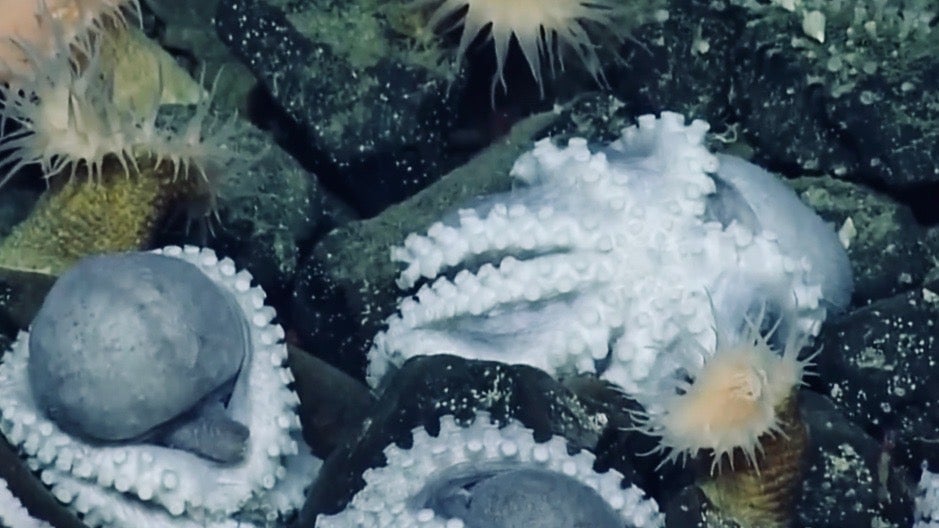The world’s largest-ever octopus gathering was just discovered in California
Octopuses don’t hang out in posses, or at least that’s what marine biologists thought. Now, however, after spotting a convention of thousands of such cephalopods deep in the seas of the Monterey Bay National Marine Sanctuary in California on Oct. 23, scientists might have to rethink this contention.


Octopuses don’t hang out in posses, or at least that’s what marine biologists thought. Now, however, after spotting a convention of thousands of such cephalopods deep in the seas of the Monterey Bay National Marine Sanctuary in California on Oct. 23, scientists might have to rethink this contention.
The discovery on the West Coast is only the second time ever that researchers have seen so many octopuses in a single place. The first sighting was made in Costa Rica and the cephalopod gathering wasn’t as big. “This has never been discovered on the West Coast of the US, never in our sanctuary and never in the world with these numbers,” Chad King, a lead scientist on the National Oceanic and Atmospheric Administration’s Nautilus exploration vessel. told KQED’s California Report.
King and his fellow explorers happened upon the octopus gathering by accident, at the end of a 35-hour expedition in waters about 80 miles southwest of Monterey. The scientists’ surprise and wonder is evident in a video of the discovery in which they marvel at “the rivers of octopus flowing here” and “lines of octopus snaking up formations of volcanic rock.”
The octopuses were found brooding, which is not to say that they were petulant. Rather, most of the creatures had their eight tentacles inverted to protect eggs, and researchers posit that the underwater gathering is made up of females. The eggs were fastened on rocks approximately 10,000 feet below the ocean’s surface.
“I’ve never in my career come across something like this, where these could potentially be nursery habitats,” King said. He speculates that the octopuses are using that area because the rocks there are especially clean or because the waters are warmer. But since so few brooding conventions have been seen, marine biologists really don’t know exactly how to explain the gatherings in this particular location. “We really don’t know much about the deep sea—we’ve seen less than 1 percent of the world’s deep ocean bottoms. On any particular dive you could be shocked by something,” the scientist told KQED.
The cephalopods were identified as the Muusoctopus robustus species. These octopuses don’t have ink sacs and are quite small. They’re considered “cosmopolitan” creatures because they are believed to have originated in the Pacific Northern Hemisphere and migrated throughout the world’s oceans. Now that we know they also gather in large groups to brood there’s even more reason to consider this particular species of octopus both cultivated and worldly.
The discovery adds to a growing body of knowledge on octopuses that indicates humans still have a lot more to learn about the exceptionally intelligent creatures. We know now that some octopuses live in a small metropolis researchers dubbed Octlantis, and that there are even scientists who hypothesize that these cephalopods, which evolved long before humans, may even have come to Earth from outer space. One thing is certain, more research is needed to better understand these mysterious sea creatures.